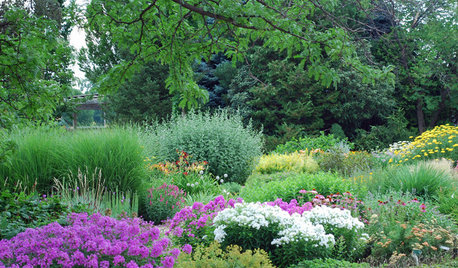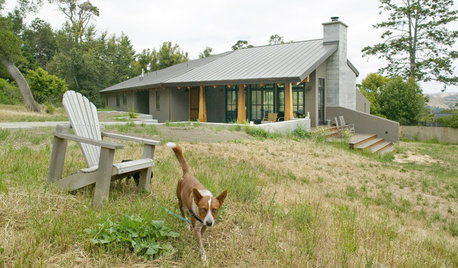question for cooks in rural/small towns
solidago1
11 years ago
Related Stories

MOST POPULAR8 Questions to Ask Yourself Before Meeting With Your Designer
Thinking in advance about how you use your space will get your first design consultation off to its best start
Full Story
KITCHEN DESIGNA Cook’s 6 Tips for Buying Kitchen Appliances
An avid home chef answers tricky questions about choosing the right oven, stovetop, vent hood and more
Full Story
LANDSCAPE DESIGNTake Your Garden on a Rural Route With Plant-Dominant Designs
Let plants take center stage for a garden that recalls idyllic pastures fashioned by nature's hand
Full Story
CONTEMPORARY HOMESHouzz Tour: Modern Meets Rustic in Rural Marin County
A lodge-like home is an oasis for an artistic, outdoorsy family
Full Story
MY HOUZZMy Houzz: Rustic Charm in Rural Louisiana
See how wood warms the interior of this idyllic cabin getaway for art gallery owners
Full Story
FARMHOUSESHouzz Tour: Nestling Into the Rural Pennsylvania Landscape
Regional barns and nature provide the inspiration for a new home sited between a meadow and the woods
Full Story
HOMES AROUND THE WORLDHouzz Tour: Contemporary Family Home Blends In With Its Rural Setting
This new build is modern, open and full of light, yet it fits in with its traditional English backdrop
Full Story
REMODELING GUIDESSurvive Your Home Remodel: 11 Must-Ask Questions
Plan ahead to keep minor hassles from turning into major headaches during an extensive renovation
Full Story
SELLING YOUR HOUSE15 Questions to Ask When Interviewing a Real Estate Agent
Here’s what you should find out before selecting an agent to sell your home
Full Story
ORGANIZINGPre-Storage Checklist: 10 Questions to Ask Yourself Before You Store
Wait, stop. Do you really need to keep that item you’re about to put into storage?
Full StoryMore Discussions








chervil2
glib
Related Professionals
Eden Prairie Landscape Architects & Landscape Designers · Oatfield Landscape Architects & Landscape Designers · Arlington Landscape Contractors · Wilmington Landscape Contractors · Allentown Landscape Contractors · Azalea Park Landscape Contractors · Columbine Landscape Contractors · Elkridge Landscape Contractors · Euclid Landscape Contractors · Lake Zurich Landscape Contractors · Oak Forest Landscape Contractors · Saint George Landscape Contractors · Tewksbury Landscape Contractors · Welby Landscape Contractors · Round Lake Beach Driveway Installation & Maintenanceediej1209 AL Zn 7
solidago1Original Author
noinwi
barbe_wa
digdirt2
zzackey
defrost49
sunnibel7 Md 7
glib
ruthieg__tx
IAmSupernova
Ohiofem 6a/5b Southwest Ohio
planatus
sunnibel7 Md 7
glib
sunnibel7 Md 7
digdirt2
glib
NancyPlants
sunnibel7 Md 7
User
glib
gardengalrn
KatyaKatya
defrost49
wally_1936
glib
Michael
missrumphius